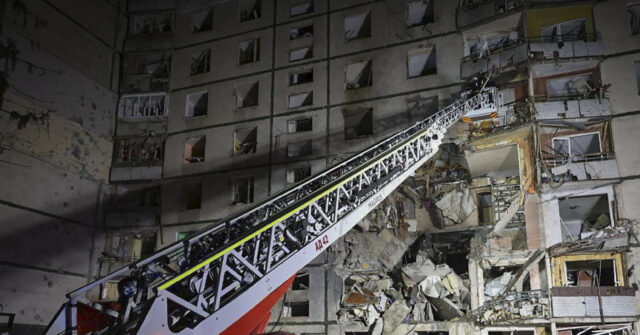On Thursday, Russian forces continued their relentless military campaign in Ukraine, targeting the city of Kharkiv, the nation’s second-largest urban area. In a tragic incident, a residential building was struck by a Russian 500-kilogram glide bomb, resulting in the death of a 12-year-old boy and injuring numerous others. According to regional head Oleh Syniehubov, although rescue efforts were intensive, the child succumbed to severe head injuries and fractures sustained during the bombing. The attacks in Kharkiv are indicative of Russia’s strategy to employ more powerful munitions, striking targets far from the front lines and increasingly affecting civilian infrastructure.
The casualties from the Kharkiv attack have drawn attention to the broader context of the war, where Russian military operations have intensified, particularly along a long line of contact that stretches across Ukraine’s eastern regions. Interior Minister Ihor Klymenko reported that at least 35 individuals were injured, and expressed concerns about the possibility of more victims trapped under the rubble. This incident paints a grim picture of the reality faced by civilians in Ukraine, highlighting the dangerous ramifications of the ongoing conflict as urban areas become battlegrounds.
As the situation escalates, Ukrainian President Volodymyr Zelenskyy has renewed his calls for the United States to provide Ukraine with access to longer-range missiles. He contends that this capability is essential for countering Russian air raids and for targeting military installations further into Russia that support the deployment of aerial assault measures against Ukrainian cities. Zelenskyy communicated his frustration on social media, emphasizing that the delayed responses and decisions from international partners put countless lives in danger. He underlined the importance of a cohesive and forceful global response to deter Russian aggression.
In parallel to the attack in Kharkiv, Russian forces launched a coordinated strike involving various missile systems, including an assault on the Dniester Estuary bridge, a critical infrastructure link within the Odesa region. Ukrainian air defenses reported that although some missiles were intercepted, the overall level of threat persisted with additional drone incursions taking place across multiple regions. The ongoing air alert status in Kyiv has become a matter of everyday life for the residents, signaling an environment of constant danger. Only a few fleeting moments of calm were experienced throughout October, exposing the acute strain on civilian life due to the hostilities.
The strategic landscape of the conflict is also evolving as Russian forces continue to press their advantages in eastern Ukraine. Reports indicate that Russian military forces have gained control of territories such as the village of Yasna Polyana in the Donetsk region, a movement that positions them closer to the Ukrainian stronghold of Kurakhove. The slow but steady advance suggests a calculated effort on the part of Russia to exploit vulnerabilities within Ukrainian defenses, particularly in terms of resources and manpower during this protracted conflict.
In response to the persistent threat, Ukraine has initiated countermeasures, including drone strikes targeting Russian positions, notably in occupied areas such as Berdyansk. These retaliatory actions reinforce Ukraine’s resolve and capability to fend off Russian attacks. However, Russia’s defense mechanisms, which reportedly managed to intercept a significant number of Ukrainian drones, underscore the complexities of the ongoing military engagements. This multifaceted conflict, marked by relentless attacks and counterattacks, continues to evolve, shaping the outlook and humanitarian conditions within the region as it unfolds.

